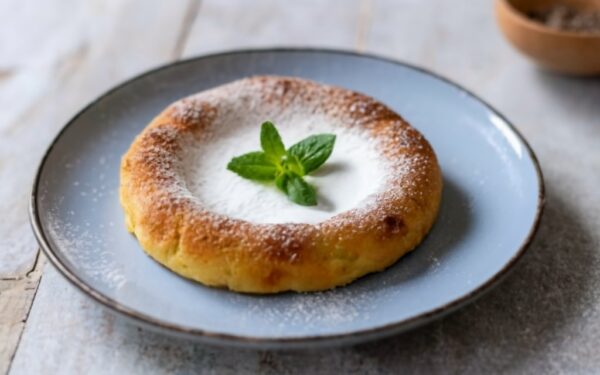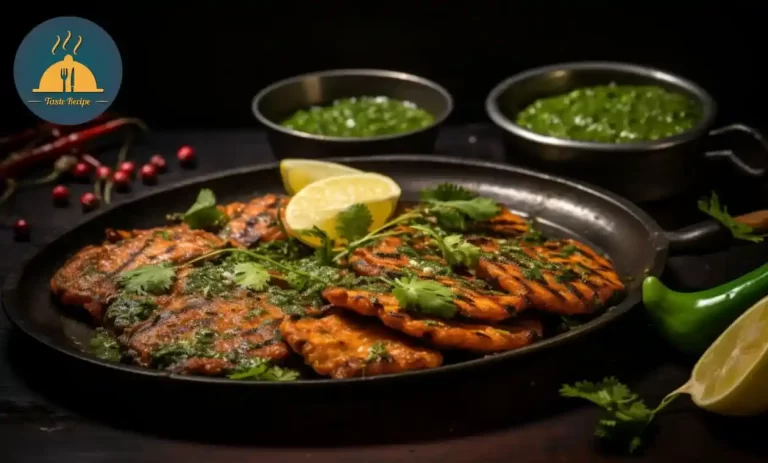Malpua Recipe: A Step-by-Step Guide to Perfect Indian Sweet

Malpua, a quintessential traditional Indian sweet, stands out as a delightful pancake or doughnut, cherished across the vibrant tapestry of the Indian subcontinent. Its popularity transcends borders, becoming a beloved treat enjoyed during breakfast, as a delightful afternoon snack, or as a sweet conclusion to special occasions.
In this exploration, we delve into the heart of Malpua, uncovering its cherished flavors and the cultural significance it holds. Let’s embark on a journey into the world of this beloved Indian sweet.
What is Malpua?
Malpua, an epitome of culinary delight, boasts a distinctive blend of textures, combining thin, crispy exteriors with a fluffy interior that melts in every bite. Crafting this Indian sweet involves a meticulous process and a harmonious blend of essential ingredients:
Batter Magic:
Malpua’s batter is a symphony of flavors, featuring all-purpose flour, curd (yogurt), and an array of aromatic spices. For an extra touch of indulgence, some recipes include khoya (dried milk solids), elevating the richness of this delightful treat.
The Art of Frying:
Once the batter is crafted to perfection, the magic unfolds in hot oil. Deep-fried until golden brown, Malpua attains its signature crispiness, creating a contrast to the softness within.
Sweet Culmination:
The journey isn’t complete without the sweet embrace of sugar syrup. Each Malpua is lovingly soaked in this syrup, infusing sweetness into every layer.
Tantalizing Toppings:
Malpua’s charm extends to its toppings – a canvas for culinary creativity. Whether adorned with Rabdi, clarified butter (Ghee), a sprinkle of chopped nuts, the richness of Kesar (saffron), or the aromatic essence of cardamom powder, each topping adds a unique dimension to the flavor profile.
In unraveling the intricacies of Malpua, we savor not just a sweet, but a masterpiece of culinary craftsmanship.
Malpua Recipe
Ingredients:
- 1 cup all-purpose flour
- 1 cup curd (yogurt)
- 1/4 cup khoya (optional)
- A pinch of cardamom powder
- Oil for frying
- Chopped nuts (almonds, pistachios, cashews) for garnish
For the Sugar Syrup:
- 1 cup sugar
- 1/2 cup water
- A few strands of saffron (Kesar)
Instructions:
- In a mixing bowl, combine all-purpose flour, curd, khoya, and a pinch of cardamom powder.
- Mix well to form a smooth batter. Ensure there are no lumps.
- Heat oil in a deep pan for frying. The oil should be medium-hot.
- Take a ladle full of batter and pour it into the hot oil, shaping it into a small pancake.
- Fry until golden brown on both sides, ensuring it’s cooked through.
- In a separate pan, combine sugar and water to make the sugar syrup.
- Add saffron strands for aroma and color.
- Simmer until the syrup reaches a one-string consistency.
- Once the Malpua is fried, dip it into the warm sugar syrup, ensuring it absorbs the sweetness.
- Garnish with chopped nuts while the Malpua is still moist from the syrup.
- Serve warm and enjoy the delightful flavors of Malpua!
This simple Malpua recipe captures the essence of this traditional Indian sweet, offering a perfect balance of crispy textures and sweet indulgence.
Varieties of Malpua
Malpua, like a versatile canvas, showcases a spectrum of regional variations, each contributing a unique twist to this beloved Indian sweet:
Malpua with Mashed Banana (Nepal):
Crafted in Nepal, this variation introduces a delightful fusion. Ripe bananas, mashed into the batter, impart a natural sweetness and a distinct texture to the Malpua.
Malpua with Sooji (Semolina) for a Thicker Texture:
In some regions, the addition of sooji (semolina) transforms the Malpua. The result is a thicker and chewier pancake, offering a delightful contrast to the traditional version.
Malpua with Chopped Fruits (Apples, Bananas, or Mangoes):
A fruity symphony unfolds in this variation, where chopped fruits become integral to the recipe. Apples, bananas, or mangoes bring a burst of freshness, elevating Malpua to a delightful fruity experience.
Malpua with Jaggery for a Richer Flavor:
Jaggery takes center stage in this variation, replacing sugar in the syrup. The result is a Malpua with a richer and more complex flavor, offering a delightful departure from the traditional sweetness.
As we explore these diverse renditions of Malpua, we witness the cultural nuances and regional preferences that contribute to the tapestry of this cherished Indian sweet.
Interesting Facts about Malpua
Unlocking the historical tapestry and cultural richness surrounding Malpua reveals fascinating insights into its origins and symbolic significance:
Historical Roots:
Malpua has deep roots in ancient India, with mentions in historical texts. Its journey spans through time, embodying a tradition that has stood the test of centuries.
Festive Tradition:
Embedded in the cultural fabric of India, Malpua takes center stage during festivals. Whether it’s the vibrant colors of Holi or the illuminating celebrations of Diwali, Malpua becomes a culinary symbol of joy and festivity.
Symbol of Abundance:
Beyond its delightful taste, Malpua carries symbolic significance. Widely considered a symbol of abundance and prosperity, it graces the festive tables, offering not just sweetness but a wish for prosperity.
Etymology of “Malpua”:
The very name “malpua” has a linguistic connection, derived from the Sanskrit word “malapuva.” In Sanskrit, “malapuva” translates to “pancake made with flower,” reflecting the artistry involved in crafting this culinary gem.
In exploring these intriguing facets of Malpua, we find more than a sweet treat; we uncover a cultural legacy, steeped in history and cherished through generations.
In Crux
In wrapping up our exploration of Malpua, we’ve uncovered a sweet journey through its rich history, diverse variations, and cultural symbolism. Let’s recap the key highlights:
Malpua is not just a dessert; it’s a canvas of flavors with regional variations like banana-infused batter, semolina for added texture, fruity enhancements, and the richness of jaggery.
This traditional Indian sweet goes beyond its culinary allure. It’s a part of historical narratives, a festive tradition during Holi and Diwali, and a symbol of prosperity.
The name “malpua,” rooted in Sanskrit, reflects the intricate artistry behind this pancake-like treat, translating to a “pancake made with flower.”
As we conclude, we extend an invitation to you, dear reader, to immerse yourself in the world of Malpua. Try your hand at the simple and delightful Malpua recipe provided earlier, and experience the joy it brings to your palate. Beyond the kitchen, let Malpua become a connection to traditions, festivals, and the spirit of abundance.
Embark on this culinary adventure, and savor the sweet embrace of Malpua – a true celebration on a plate!






